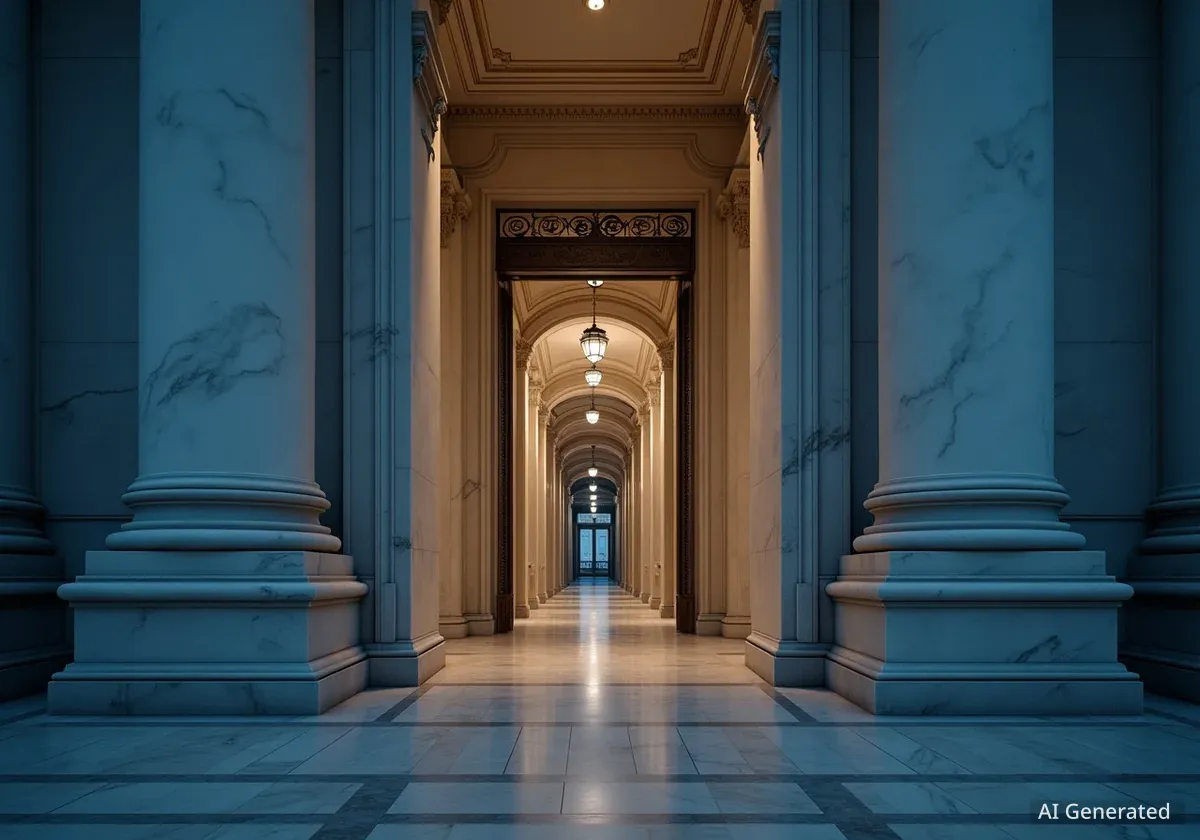Democratic leaders in Congress are calling for an urgent meeting with President Trump. This demand follows the Senate's rejection of a funding bill. The legislative setback brings the United States closer to a potential government shutdown.
Key Takeaways
- Congressional Democrats want to meet President Trump.
- The Senate failed to pass a key funding bill.
- A government shutdown could happen soon.
- Negotiations remain stalled over border security funding.
Funding Bill Fails in Senate
On Thursday, the Senate voted against a critical spending bill. This bill aimed to keep government operations funded. Its failure means a partial government shutdown could begin at midnight on Friday. Key government services and agencies face disruption.
The proposed legislation included funds for various federal departments. It also contained a sum for border security. However, the amount allocated for border security was significantly less than President Trump requested for a border wall.
"We are facing a serious deadline with real consequences for American families," said Senate Minority Leader Chuck Schumer. "We need to sit down with the President and negotiate in good faith to avoid a shutdown."
The vote highlighted the deep divisions between Democrats and Republicans. Both parties hold firm positions on federal spending and border policies. The impasse has prevented any compromise solution.
Government Shutdown Facts
- A partial shutdown means some federal agencies will close.
- Hundreds of thousands of federal workers could be furloughed.
- Essential services, like national security and public safety, typically continue.
- Past shutdowns have impacted economic growth and public morale.
Standoff Over Border Wall Funding
The primary point of disagreement centers on funding for a wall along the U.S.-Mexico border. President Trump has consistently demanded billions of dollars for its construction. Democrats, however, oppose this level of funding.
Democrats argue that a border wall is an ineffective and expensive solution. They prefer investments in technology, personnel, and infrastructure at ports of entry. This difference in approach has stalled all budget negotiations.
The Senate bill included $1.6 billion for border security. This amount is far below the $5 billion President Trump requested. The President has stated he will not sign any bill that does not meet his demands for border wall funding.
Historical Context
The United States has experienced several government shutdowns in recent decades. The longest shutdown occurred from December 2018 to January 2019, lasting 35 days. That shutdown also stemmed from a dispute over border wall funding. It impacted approximately 800,000 federal employees, many of whom worked without pay or were furloughed.
Impact on Federal Workers and Services
If a shutdown occurs, hundreds of thousands of federal employees face uncertainty. Many non-essential workers would be sent home without pay. Essential personnel, such as those in law enforcement and national security, would likely continue working but without immediate compensation.
The direct financial strain on these families can be significant. Furthermore, the disruption of federal services affects millions of Americans. National parks might close, and some government services could be delayed or halted.
According to a 2019 congressional report, a previous shutdown cost the U.S. economy $11 billion. This included a $3 billion permanent loss in economic output. The current situation could lead to similar, if not greater, economic consequences.
Potential Economic Ramifications
- Delayed tax refunds.
- Reduced government contracting.
- Impact on federal loan processing.
- Reduced consumer confidence.
Path Forward Remains Unclear
With the deadline rapidly approaching, the path to a resolution is not clear. Democratic leaders, including House Speaker Nancy Pelosi and Senate Minority Leader Chuck Schumer, emphasized the need for direct talks.
They believe a face-to-face meeting with President Trump is essential. Such a meeting could potentially break the current deadlock. However, the White House has not yet confirmed whether the President will agree to such a meeting before the deadline.
Both sides accuse the other of intransigence. Republicans argue Democrats are unwilling to compromise on border security. Democrats state that President Trump is holding the government hostage over his wall demands.
"The ball is in the President's court," said Speaker Pelosi. "He must come to the table ready to negotiate for the good of the American people, not just for a wall."
The coming hours will be critical. Without an agreement, a partial government shutdown is imminent. This would mark another period of political and economic instability for the nation.





